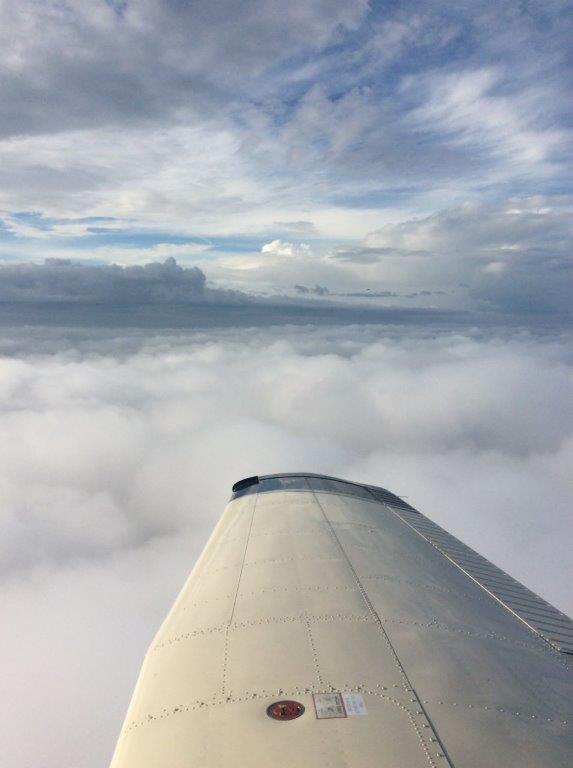We departed Fowlmere at 0630 with broken cloud at 1500QNH and OAT -3C. Stansted had cleared us through their zone climbing to Flight Level 060. They handed us over to London and we were cleared direct DVR climbing to FL180. The new owner of the PA46-310P Malibu (GMICZ) was flying the aircraft with myself as ‘safety pilot’ and a Malaysian passenger on his first flight in a GA aircraft. Our destination was Colmar, a routine destination for my client who owned a factory there.

As we levelled off at FL180 the engine ‘stopped’. It was just as if the fuel had been cut off. We were just approaching Canterbury. I recall having been able to see Southend earlier but the area below us was now covered in low cloud and the weather for Manston and Biggin included Freezing Fog and poor visibility.
There were a few seconds of ‘Startle effect’ and disbelief and then: “Mayday, Mayday, Mayday, London GMICZ engine failure” the controller responded immediately and gave me a radar vector towards Manston. I knew Manston had fog so I responded saying we were turning towards Southend. I punched in EGMC into the Garmin 150 and it gave QDM 305degrees 23nautical miles.
My client said ‘you have’ and I trimmed the aircraft to best glide and checked Alt Air-On, Fuel Change Tanks, Boost Pump On, Mixture Rich, Throttle Exercise, Mags L/R, all to no avail.
The glide was giving me 750fpm indicated rate of descent and with a slight tailwind I calculated we should make the runway with a little to spare for gear and flap deployment so thought we should be ok but looking back we really needed an extra couple of miles to allow for positioning and dropping the gear. I remember being quite keen not to end up in the Thames.
It had not occurred to me that a side effect of the loss of engine power would be the loss of the heater function. This was not very good in the earlier PA46-310P anyway and the inside of all the windows began to ice up. It was November and -32C at 18,000ft. “Give me your credit card please!” I used it to scrape ice off my side window and asked my client to do the same. I reminded our passenger his life vest was located under his seat and asked him to put it on. We were all ‘shivering’ as London handed us over to Southend Radar and wished me ‘good luck’. We actually ended up overhead at 1,900ft and had to orbit once to scrub off altitude rolling out slightly high onto final approach and landing on runway 24.
There were 9 fire engines in attendance. I noticed that the engine was ‘idling’. It would not respond to any throttle but was idling at 600rpm. I had retarded the prop control to reduce the drag so I advanced it and we were actually able to taxy in slowly and park on the apron. I thanked the fire crew on 121.60. They and ATC, everyone had been very helpful.
By the time we were on a stand I was able to get 1,000RPM and subsequently after several minutes ‘normal’ power was restored I ran the engine up to 2,000RPM and checked MAGS and all appeared OK.
Subsequent investigation revealed the likely cause to be water contamination in the fuel distributor on top of the engine had ‘frozen’ in the low temperature and cut off the fuel supply to the engine. I contacted Piper and they recommended using a Shell Icing Inhibitor anytime we intended operating this aircraft at temperatures below -20C as it was a documented issue with both Avgas and more so with AVTUR(Jet Fuel) and subsequently for ‘Winter’ missions we used Shell Additive and never had that problem again!
I was a Type Rating Examiner on the PA46 and had attended the factory safety course on the type in 1995. I recall being given several simulated engine failures during the training at Vero Beach from varying altitudes and feel that the quality of the training from Attitudes International had a strong bearing on the outcome of this event. In my opinion there can be no substitute for practical revision of emergency procedures and I routinely incorporate them in my checkrides!